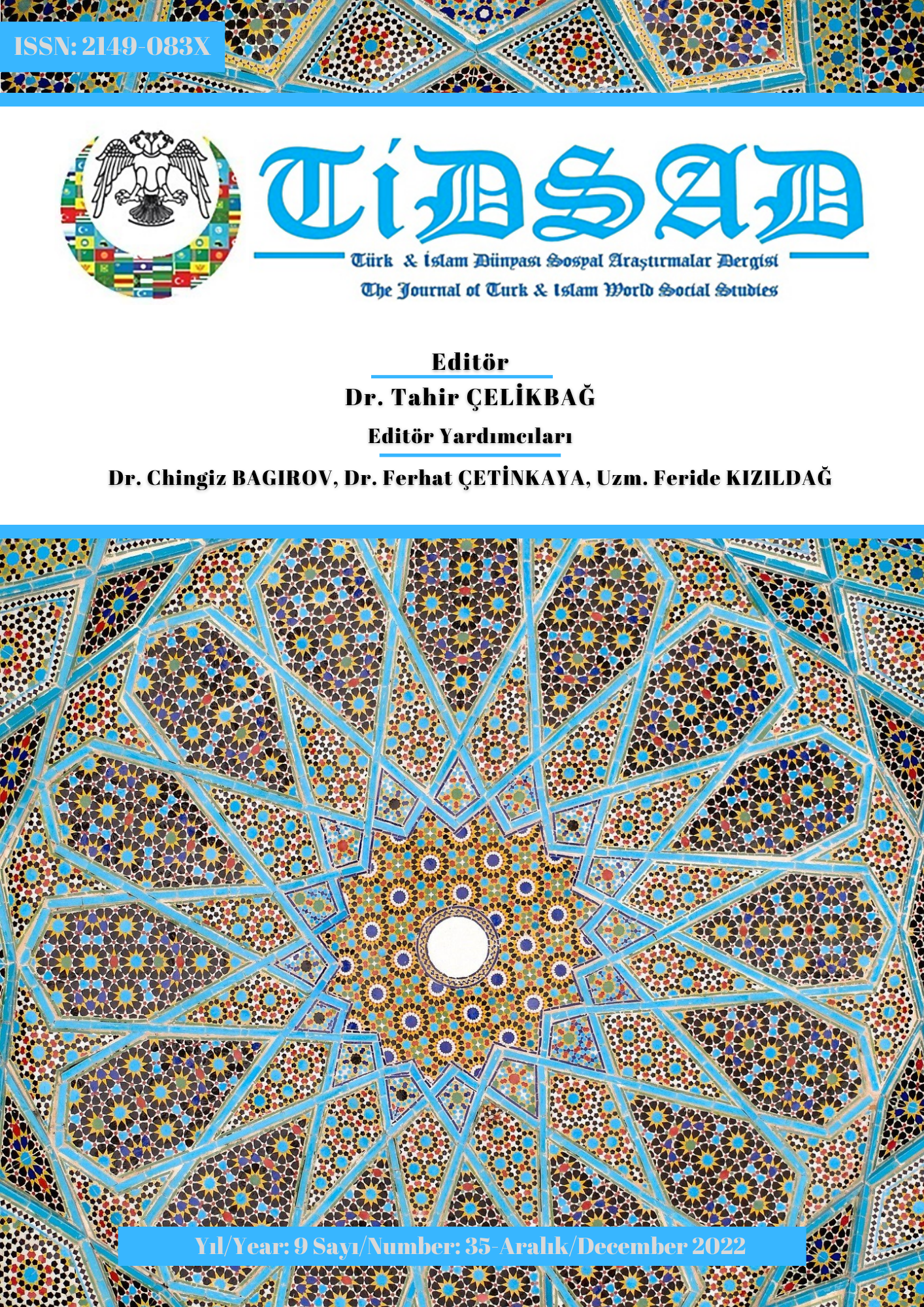Author :
Abstract
Bitkisel liflerin değerlendirilerek ağ, hasır, sepet gibi eşyalara dönüştürülmesi ile örücülük sanatı başlamıştır. Herhangi bir araç kullanılmadan üretilen ürünlere uygulanan teknikler, hayvan liflerinin de farklı aletlerle eğrilerek ip olarak değerlendirilmesi sonucunda gündelik hayatta kullanılan ve hammaddesi lif olan el sanatlarının ortaya çıkmasına kaynak teşkil etmiştir. Bu kapsamda yer alan kültür varlıklarının bir grubunu iğne, tığ ya da şiş kullanılarak geleneksel yöntemlerle örülen ve ayak giysisi olarak kullanılan çorap ve patikler oluşturmaktadır. Milattan önceki süreçlerde kullanılmaya başlandığı bilinen bu unsurların üretimlerinde kullanılan teknik ve araçların kuşaktan kuşağa aktarılması gelişerek yayılmasını sağlanmıştır. Geleneksel yöntemlerle çorap ve patik örücülüğünün sürdürüldüğü coğrafyalardan biri bugün üzerinde yaşadığımız Anadolu topraklarıdır. Çalışmanın evreni Şırnak İdil ilçesinin geleneksel çorap ve patikleridir. Araştırmada görüşme, belgeleme, betimsel ve doküman analizine dayanılarak yapılan nitel araştırma yönteminden yararlanılmıştır. Örneklem grubunu yetmiş çorap ve on beş patik örneği oluşturmaktadır. Amaç, İdil’de tespit edilen geleneksel el örgüsü çorapları ve patikleri malzeme, teknik, kompozisyon, motif ve anlam yükleri açılarından incelemek ve İdil’in kalın örme işleri sınıfında yer alan unsurların geleneksel çorap örücülüğü içindeki yerini ortaya koymaktır. Yöre ayak giysilerinin geleneksel tekniklerle üretildiği ancak malzemede değişim olduğu gözlenmiştir. Bunun yanı sıra motiflerin geleneği yansıttığı ve Anadolu’nun farklı yörelerinde kullanılanlarla yalnızca adlandırma açısından farklılık taşıdığı anlaşılmıştır.
Keywords
Abstract
The art of knitting started with using vegetable fibers and transforming them into items such as nets, straws, and baskets. The techniques applied to these products, which are produced without using any tools, have been the source of the emergence of handicrafts, which are used in daily life and whose raw material is fiber, as a result of the use of animal fibers as yarn by spinning. Socks and booties, knitted with traditional methods using needle, crochet, or needle, and used as footwear, constitute a group of cultural assets included in this scope. The techniques and tools used in producing these elements, known to have been made in the processes before Christ, were transferred from generation to generation and spread. One of the geographies where socks and booties are knitted with traditional methods is the Anatolian lands we live in today. The universe of the study is the traditional socks and booties of the Şırnak İdil district. A qualitative research method based on observation, interview, and document analysis was used in the research. Seventy socks and fifteen booties constitute the sample group. The aim is to examine the traditional hand-knitted socks and booties in İdil in terms of material, technique, composition, motif, and meaning loads and to reveal the place of the elements in İdil's thick knitting work class in traditional sock knitting. It has been observed that the local footwear is produced using traditional knitting techniques, but there is a change in the material. In addition, it has been understood that the motifs reflect the tradition and differ only in name from those used in different regions of Anatolia.
